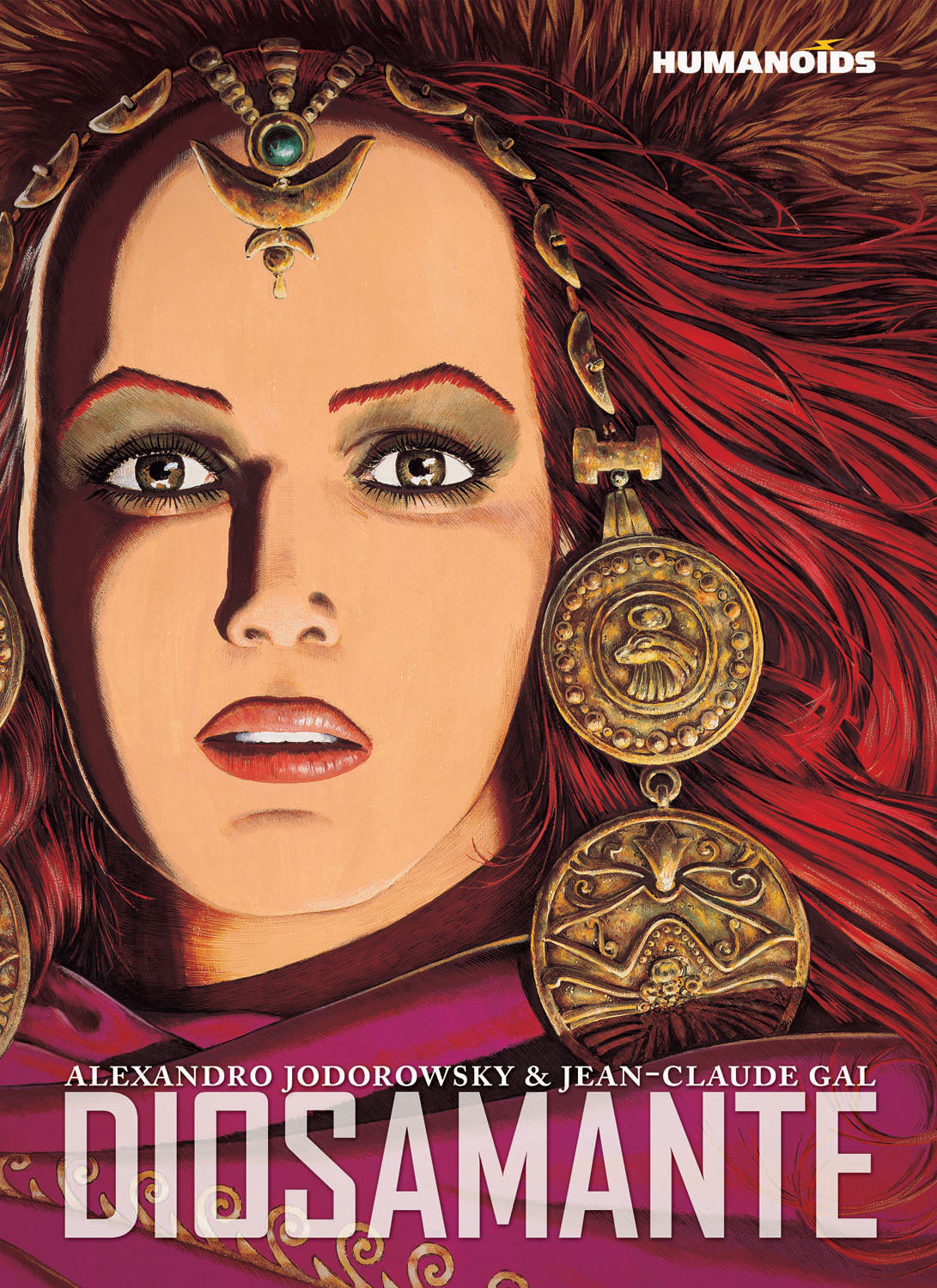Diosamante
Story: Alexandro Jodorowsky
Art: Jean-Claude Gal
Publisher: Humanoids
Reviewed by John Anderson
Diosamante is the story of Queen Diosamante, the most beautiful woman in the world, and her spiritual journey to become worthy of the magical king Urbal. Her journey takes her to the depths of degradation and to the heights of enlightenment.
Jean-Claude Gal was an alumnus of Métal Hurlant; with Jean-Pierre Dionnet he created the sword-and-sorcery epics Conquering Armies and Arn. His art was incredibly detailed and realistic, depicting decaying ruins, beautiful cities, hordes of warriors. Diosamante was his first work in colour.
Sadly, it was never completed. Only the first volume was published before Gal passed away. This new collection is the first time the story has been published in English, and comprises about a volume and a third’s worth of what was intended to be a four-volume story. It includes all of Gal’s colour art, plus some black and white pencils and breakdowns. It begins with a short preface by Jodorowsky about how the project came to be.
Even though it’s incomplete, it’s still worth reading. This book shows off one of the reasons I love comics: the beautiful, realistic, detailed depiction of utter fantasy. Gal’s glittering cities and sprawling ruins, with his incorporation of designs from Chinese bronzes, are wonderfully intricate and evocative. In the second volume, Gal goes all out in his depiction of the huge city of Daibath and the incredible ship that carries Diosamante to safety. This ship is as big as a city and is the most wonderfully elaborate sailing ship ever drawn. I have no idea if it would actually sail, but who cares, it’s fantastic.
The panel layouts are intricate as well. During the earthquakes and fights the panels are jagged, and during Diosamante’s spiritual elevation the panel layout is symmetrical. There is an amazing two-page spread of the women and children of Daibath walking into the ship, juxtaposed with individual women’s goodbyes to the city and families.
The story itself is arranged into chapters, and each chapter begins with a text introduction that covers a lot of ground; in other words, large parts of the story are told in these short introductions. It’s a technique that makes the adventure much bigger than what we see in the panels. And even though this is a small part of what was intended to be a longer story, Jodorowsky still manages to take the plot in all sorts of directions I did not expect. He makes great use of his “life is a wheel” theme: in order to achieve enlightenment, Diosamante must plunge into the darkness and suffer utter humiliation before attaining her heart’s desire. But when her life is at its most blissful, something horrible is just around the corner.
The book ends with a short description of what was to happen in future volumes. This hint at future mad plot twists, plus Gal’s sketches of the unfinished second volume, suggest that the story has barely begun. How I so wish that it had been finished. But as it is, this book stands as a wonderful tribute to two of comics’ most creative minds.

